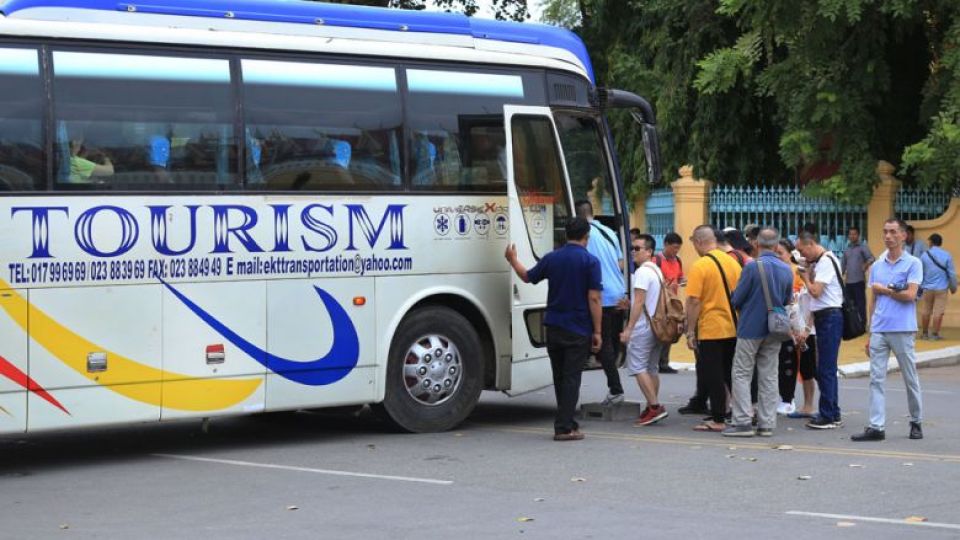October 18, 2022
PHNOM PENH – The tourism ministry’s goal of attracting 700,000 annual Vietnamese arrivals by 2023 and one million by 2024 may seem relatively easy to achieve to some, but it could require a new series of well-informed strategies as well as the effective implementation and promotion thereof, industry insiders say.
Ministry figures show that annual Vietnamese arrivals to the Kingdom peaked in 2015 at 987,792, falling by 8.00 per cent to 908,803 in 2019, prior to Covid-19. These figures also trended down in terms of market share, from 20.69 per cent in 2015 to 13.75 per cent in 2019.
This year, Cambodia has logged just 235,546 Vietnamese arrivals in January-August, most of whom declared “holiday” as their purpose of visit, at 170,858 or 72.54 per cent, followed by “business” (64,359; 27.32 per cent) and “other” (329; 0.14 per cent). August alone accounted for 19.43 per cent of the eight-month total, at 45,764, which marked a 1.67 per cent dip from July.
Minister of Tourism Thong Khon on October 12 had a meeting with Vietnamese ambassador Nguyen Huy Tang where both sides agreed to push for an expansion of and more substantial progress in tourism cooperation, the ministry noted in a statement.
Khon asked Hanoi to encourage more of its citizens to choose Cambodia as their holiday destination, so as to meet his ministry’s goals for Vietnamese arrivals by their respective years.
“With the world yet to recover from the Covid-19 pandemic and faced by economic uncertainty, boosting tourism flows across neighbouring countries, or regionally, is of utmost importance. We hence need to step up tourism cooperation with Vietnam to boost travel in either direction, by land, air and waterways,” he said in the statement.
Both sides agreed to lend support for better waterway links – especially between Kampot International Tourism Port and Phu Quoc, Vietnam’s largest island which is known in Khmer is Koh Tral – as well as to push for more flights connecting Siem Reap with Phu Quoc, Haiphong and Can Tho; Sihanoukville with airports near Halong Bay; and other important tourism-centric destinations.
They also vowed to promote “self-driving tourism” – schemes allowing foreign-plated vehicles access to designated regions abroad – through parts of Cambodia and Vietnam, as well as additional countries, according to the statement.
Cambodia Association of Travel Agents (CATA) president Chhay Sivlin told The Post on October 16 that Vietnamese arrivals in the Kingdom have been progressively rising since the latter’s government moved to allow the resumption of socio-economic activity as Covid-19-induced disruptions eased.
Given Vietnam’s proximity to Cambodia and the ostensibly manageable suite of obstacles to the Kingdom’s tourism sector in light of post-Covid recovery, the ministry’s goals for Vietnamese arrivals “will be achieved as planned”, she contended.
But to make this seemingly gargantuan task less daunting, the Cambodian tourism community needs a more comprehensive marketing strategy to promote existing and upcoming products and services, and keep people well-informed about the latest news in the field, she opined, adding that making overland cross-border travel between Cambodia and Vietnam easier and faster “is a must”.
“We need to prepare and simplify to make things even more straightforward – one of the approaches being used is to speed up cross-border procedures, which could drive up the number of visitors beyond the targets set by the ministry,” Sivlin said.
Pacific Asia Travel Association Cambodia chapter chairman Thourn Sinan, on the other hand, pivoted to the importance of implementation, commenting that even well drawn-up strategies and plans have been known to achieve zero results, due to a lack of funds, human resources, or practical or contextually-relevant tools.
“For the meantime, the Cambodian tourism sector will mainly rely on Vietnamese and Thai tourists, whereas I see holidaymakers from elsewhere facing loads of challenges [to travel to the Kingdom], some of which stem from their economic situations and the costly nature of more distant trips.
“With a good plan, sufficient resources and good implementation, I believe that the number of Vietnamese leisure travellers visiting Cambodia can exceed the [ministry’s] goals,” he said.
According to tourism ministry data, Vietnam accounted for 23.83 per cent of the 988,272 January-August inbound arrivals, ranking second after Thailand with a 35.28 per cent share, and followed by China, the US, Indonesia, South Korea, Malaysia, France and the UK.


